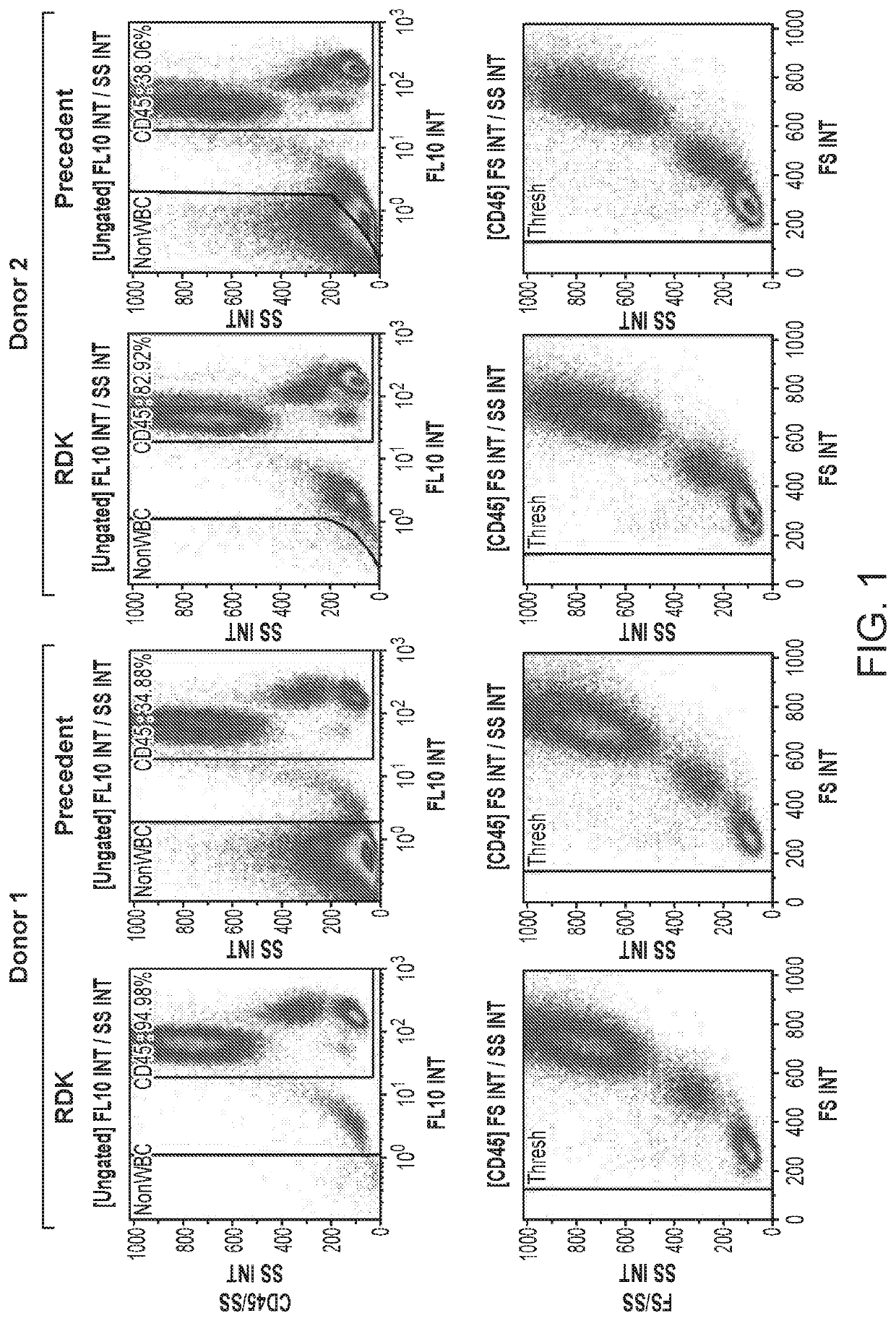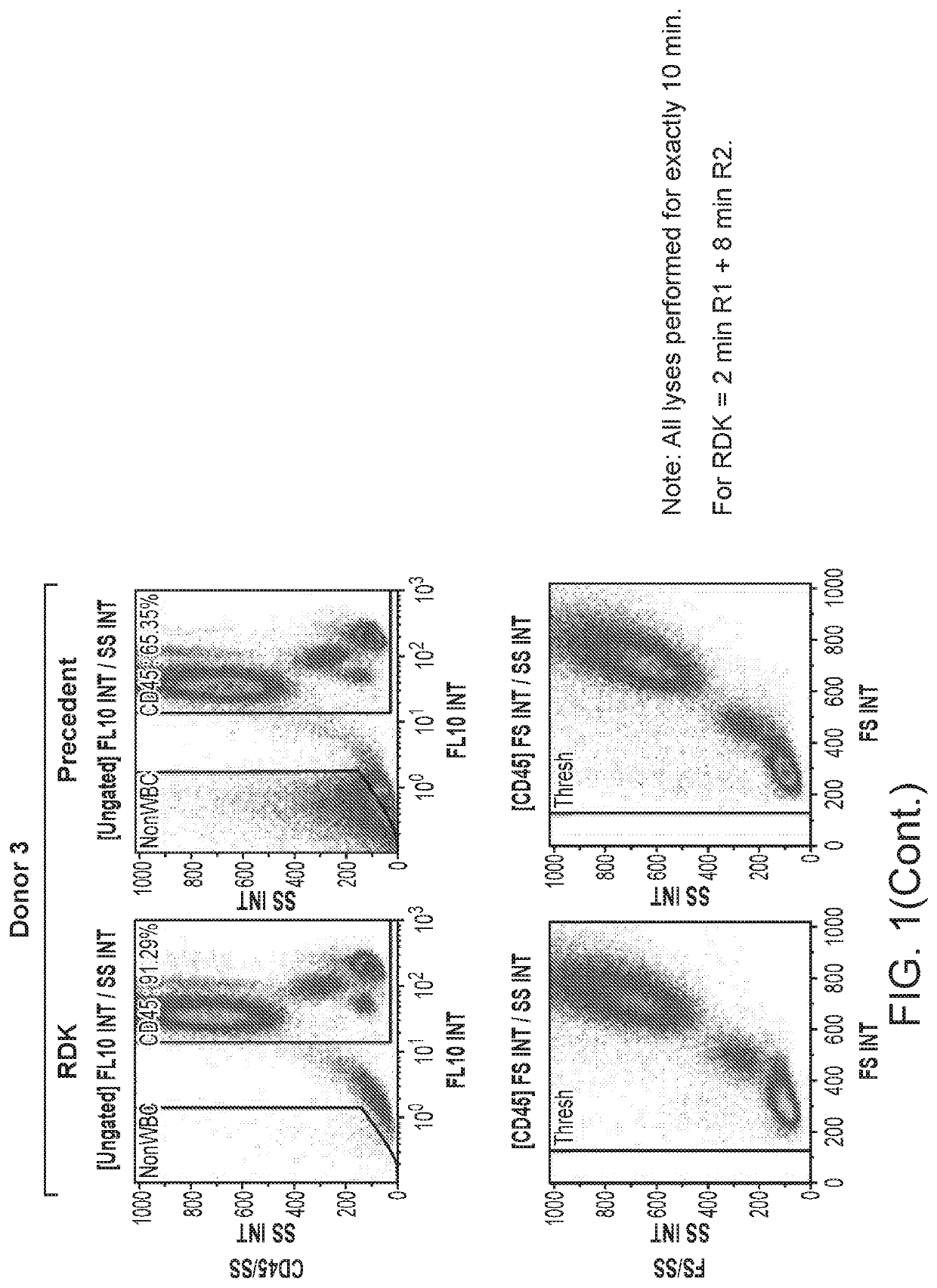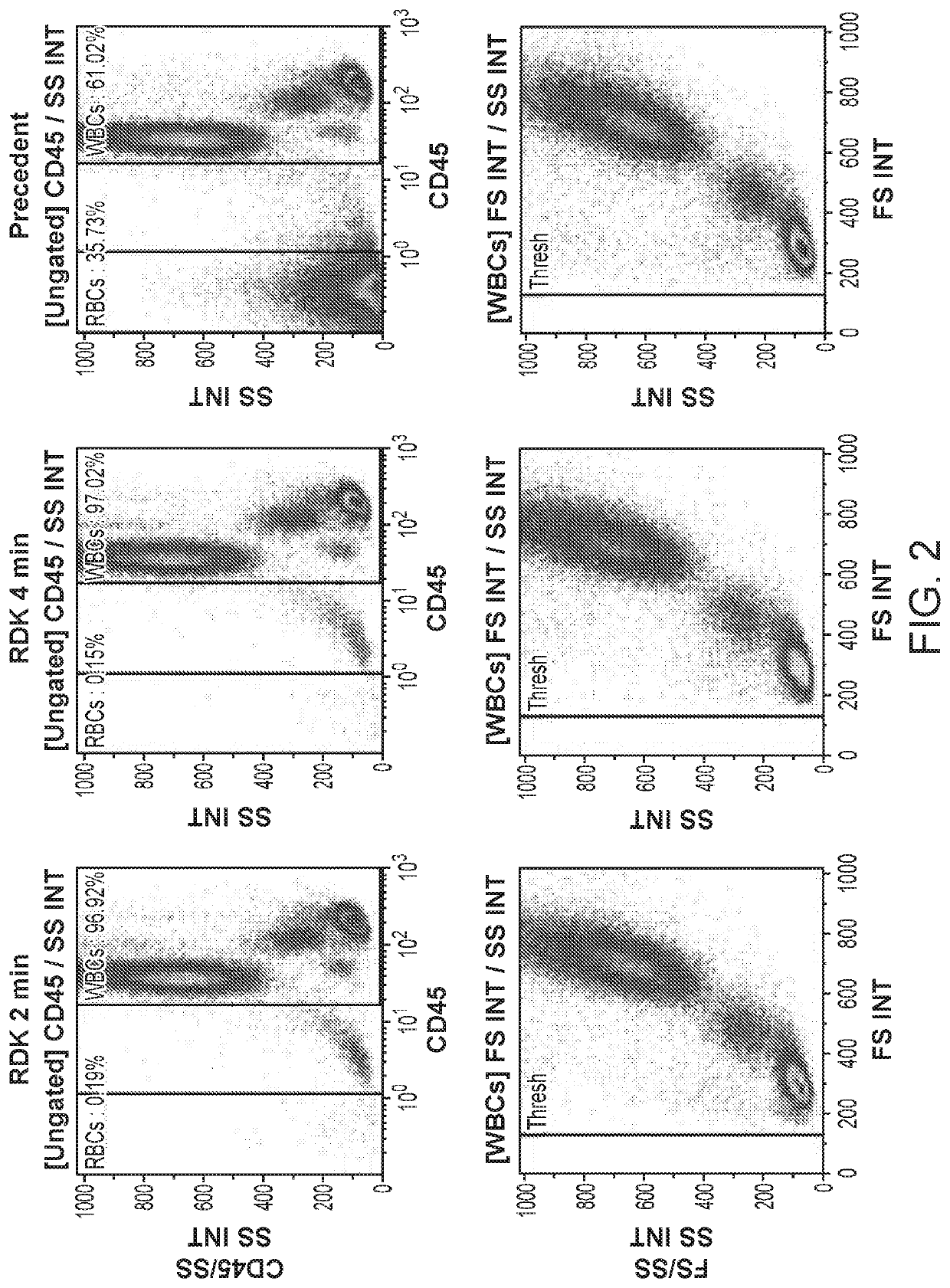Compositions and methods for lysis of red blood cells
- Summary
- Abstract
- Description
- Claims
- Application Information
AI Technical Summary
Benefits of technology
Problems solved by technology
Method used
Image
Examples
example 1
[0070]In this example, the RBS demolition buffer was composed of: 1) 3.2% Formaldehye, 2) 2×PBS (roughly 274 mM NaCl, 5.4 mM KCl, and 20 mM Na2HPO4, and 3.6 mM KH2PO4, pH 7.4), and 3) 10 mM K3-EDTA. The buffer was added to the whole-blood sample at a volume-to-volume ratio of 1:1, and then incubated for a time that was between ˜45 sec and 10 minutes. The final concentration upon 1:1 dilution was: 1) 1.6% Formaldehyde, 2) 1.5×PBS, and 3) 5 mM K3-EDTA, and the actual concentrations of the buffer can be altered to allow for different volumes provided that they also result in these final concentrations. Upon dilution with 0.9× to 1×PBS or IsoFlow to anywhere greater than 4× the initial sample volume, the RBCs and resting platelets were completely lysed in about the same time frame as it was incubated with the first reagent (i.e., ˜45 sec to 10 minutes, respectively). The volume may be further reduced and / or optimized at lower volumes if the solution is adjusted so as to provide a final ...
example 2
[0071]The methods and kits disclosed are compatible with a number of existing flow cytometry analysis applications. One of such applications is the dried-B-cell-antibody panel (Beckman Coulter). In one assay, 150 mL of RBC demolition buffer, i.e., the first reagent of the RDK was mixed with 50 mL of PBS to produce a 200 mL mixture. The mixture was added to the 100 mL blood post-staining. 1×PBS was used to restore the mixture to the isotonic state. In another assay, 200 μL of the RDK first reagent was added to 50 mL whole blood sample. After a two-minute incubation, 0.9×PBS was added to restore the mixture to isotonic state. In yet another assay, 150 μL of the RDK first reagent was added to 100 μL blood and 50 μL of antibodies and after incubation for 2 minutes, 0.9×PBS was added to restore the mixture to the isotonic state. The samples are then used for flow cytometry analysis.
[0072]In the case of L&L washing for Kappa / Lambda staining, the samples were lysed directly with wash buffe...
example 3
[0073]RBC Demolition Kit (RDK) was used for lysing RBCs in whole blood. All lyses were performed for exactly 10 min, which for the RDK consisted of 2 min of incubation with reagent 1, followed by 8 min with 1×PBS.
[0074]FIG. 1 is a 3-donor comparison of the RDK to a precedent buffer. The upper panel compares the CD45 vs. Side Scatter (SS) dot plots, while the lower panel demonstrates the respective Forward Scatter (FS) and SS profiles for each of their CD45 populations. All scatter profiles were consistent, and the results show that RBCs were fully lysed by the RDK in all cases. In the CD45 vs. SS plots, the population entitled “NonWBC” consists of RBCs and resting platelets, while the population between the NonWBC and CD45 gates consists of activated platelets. Activated platelets typically do not lyse by any method, though they may be reduced in some cases or will sometimes smear up into the CD45 population.
[0075]FIG. 2 is comparison of 2 and 4 min of incubation with RDK reagent 1 ...
PUM
 Login to View More
Login to View More Abstract
Description
Claims
Application Information
 Login to View More
Login to View More - Generate Ideas
- Intellectual Property
- Life Sciences
- Materials
- Tech Scout
- Unparalleled Data Quality
- Higher Quality Content
- 60% Fewer Hallucinations
Browse by: Latest US Patents, China's latest patents, Technical Efficacy Thesaurus, Application Domain, Technology Topic, Popular Technical Reports.
© 2025 PatSnap. All rights reserved.Legal|Privacy policy|Modern Slavery Act Transparency Statement|Sitemap|About US| Contact US: help@patsnap.com



